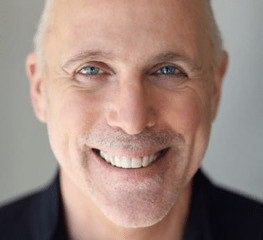
Hot Days, High Stakes: Heat Illness and HR’s Role
Environmental, Health and Safety


Scott Schneider, Head of Content Development at Traliant, recently spoke with Tom Fox on the FCPA Compliance Report podcast about code of conduct. In Part 1 of this 3-Part series, Scott shares why a code serves as the backbone for organizational culture and compliance. The interview has been edited for length and clarity. The Bridge […]

Scott Schneider, Head of Content Development at Traliant, recently spoke with Tom Fox on the FCPA Compliance Report podcast about code of conduct. In Part 1 of this 3-Part series, Scott shares why a code serves as the backbone for organizational culture and compliance. The interview has been edited for length and clarity.
Tom: Why should a company have a code of conduct and why is code training important?
Scott: Twenty years ago, we looked at codes more formally. People thought of them organizationally in terms of a pyramid. At the top, would be the ‘code of conduct’ and that’s the highest level, the most abstract description of who we are. Under that would’ve been policies, and under that would’ve been procedures.
That way of looking at codes is still descriptively correct. But I think about codes a little differently these days. Codes do two things. They address legal obligations. And they also answer important questions about what an employer believes as an organization.
Two decades ago, you would’ve said the aspirational world was nice, but not that important. Today it matters immensely to employees, stakeholders, customers and business partners.
So rather than thinking about a code as the top of a pyramid in an org chart, I think about the code being the bridge between those separate worlds. The practical or legal world on one hand, and the aspirational world on the other. Your code is the thing that helps you reconcile those two aspects of the organization.
Good training follows suit. Yes, it explains subjects like bribery, money laundering and harassment. But it should also send the message that the employer stands for something. So, it sets the table for all the other training and messaging an employer does and answers “Why are we getting longer training on certain topics?”
It’s easier for employees to make good decisions if they know what your company stands for. Good code training helps employees understand why there are policies, why there’s training and why the fuss about doing the right thing.
Tom: You’ve talked about the movers of a compliance program being management and leadership, culture and training. Is the code a part of that holistic approach, or does it standalone?
Scott: A code is an important part of it. When you roll out a training program, the most important indicator of success is whether it has the support of management, because when management says it’s important, employees listen. And that carries into training that talks about who we are, what we do, how we do it.
Tom: Is a code important for a multitude of stakeholders and a way for a company to articulate, ‘who we are and what we stand for?’
Scott: A code of conduct, like an employer, has lots of stakeholders inside and outside the organization. A good code speaks to them all, not just the lawyers and the litigators in the room.
Every organization needs rules or there would be chaos. But codes and training shouldn’t just recite rules. They should explain them in terms of values. It’s the explanation that often matters most. It helps employees understand what the rule means and why it’s important. And it helps employees apply the rule. For example, a code may not address my specific issue, but if I understand the movers behind the rule they’re talking about, then I may be able to figure out what to do in my situation.
To listen to the entire FCPA Compliance Report interview with Scott Schneider, go to https://bit.ly/3MYZqyE.
In Part 2, Scott shares his views on how codes of conduct have evolved, what they should cover and the process of developing one.
In Part 3, Scott shares his views on how often a code of conduct should be updated and the keys to effective code training.

Scott Schneider, Traliant’s Head of Content, is a compliance professional and former attorney. He leverages more than two decades of compliance experience to create impactful training solutions that help employees explore and understand critical compliance and work issues.